[social_warfare]
Mesmerized by those massive creatures gliding through the ocean, showcasing their acrobatic skills with an effortless flick of their gigantic tails? Yip, we’re talking about humpback whales, the guardians of the ocean.
These marine mammals are not just about their size or the iconic hump that earned them their name; they’re a fascinating mix of mystery, power, and surprisingly, musical talent.
What is the Humpback Whale?
Humpback whales, known scientifically as Megaptera novaeangliae (which sounds like a spell from Harry Potter, but it’s not), are a species of baleen whale. They’re famous not just for their impressive size but for their spectacular breaching behavior and hauntingly beautiful songs. These creatures are like the ocean’s serenaders, crooning complex tunes that can continue for hours.
Humpback whales play a crucial role in their ecosystems, not just as massive filter feeders, but as part of the ocean’s complex web of life that includes everything from the tiniest plankton to the largest predators.
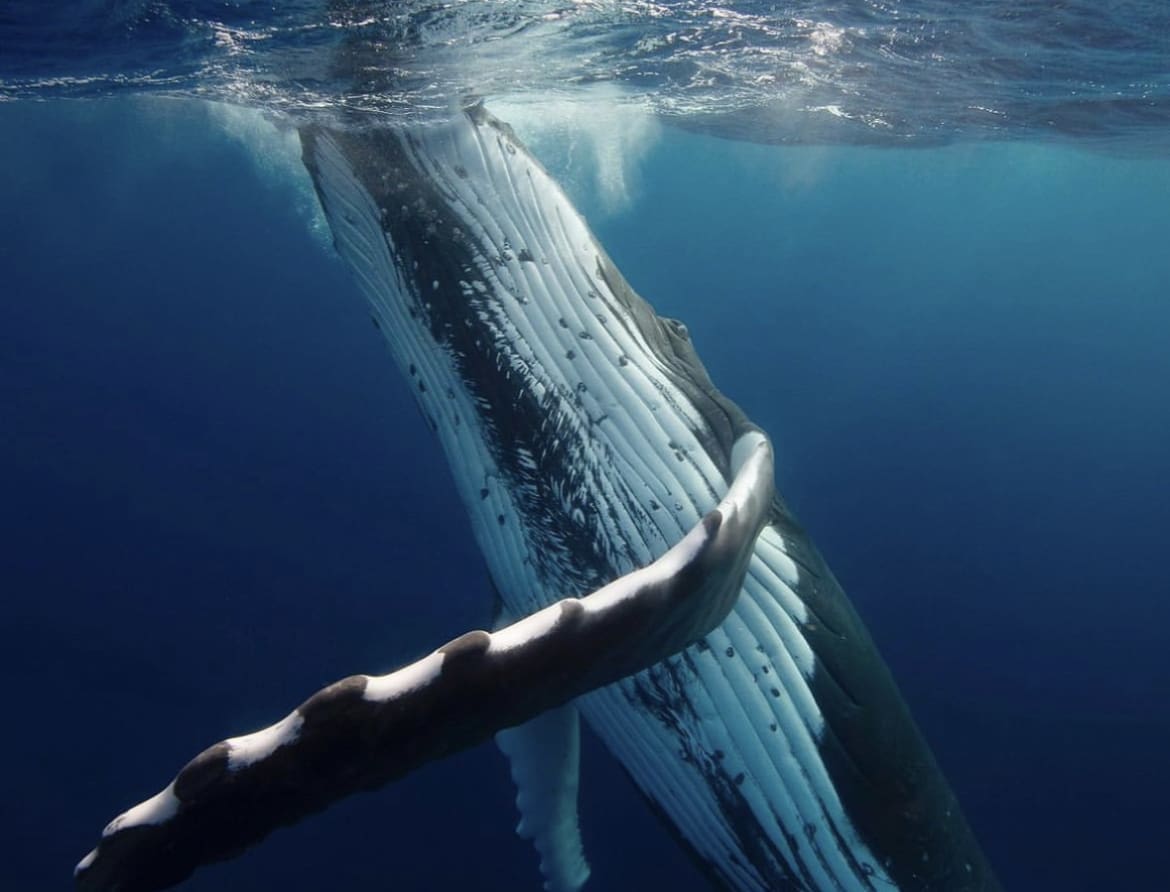
What do Humpback Whales Look Like?
Imagine a creature so vast it dwarfs most things around it, yet it moves with grace that belies its massive form. Humpback whales are known for their distinctive body shape, with long pectoral fins (hence the name Megaptera, meaning “big-winged”) and a knobbly head sprinkled with protuberances called tubercles.
Each tubercle houses a single hair follicle, which scientists believe helps the whale sense its environment. Their skin is a canvas of black, white, and grey, adorned with patterns unique to each whale. These patterns are like fingerprints, allowing researchers to identify individuals. And those famous breaches? They’re like the whale’s way of saying, “Look at me,” a display of strength and perhaps a way to communicate or dislodge parasites.
How Big are Humpback Whales?
When we say big, we mean big. Adult humpbacks can stretch up to 60 feet (about 18 meters) long, with the females usually out-sizing the males—girl power in the ocean! They tip the scales at around 40 tons (that’s about 80,000 pounds or 36,000 kilograms).
To put that into perspective, that’s like stacking about 24 average-sized cars on a giant seesaw. Calves are no small fry either; they’re born at a whopping 2,000 pounds (about 900 kilograms) and 15 feet (4.5 meters) in length. They grow rapidly, thanks to the rich, fatty milk from their mothers. Imagine drinking milk so fattening that you gain hundreds of pounds a month!
Diving with Humpback Whales | @maalu_i
Humpback Whale Teeth
Alright, let’s clear something up right away – humpback whales don’t have teeth. Shocking, I know, especially considering their size. Instead, they’re equipped with something called baleen plates.
These are like the ocean’s version of a comb, made of keratin (the same stuff your hair and nails are made of). Humpbacks have about 300-400 of these plates hanging from their upper jaws.
When it’s chow time, they take a massive gulp of water, then close their mouths and push the water out through the baleen, trapping all sorts of goodies like krill and small fish. It’s like having a built-in fishing net that’s also part of your mouth – pretty nifty, right?
Humpback Whale Tails
Now, onto one of the most iconic parts of the humpback whale – their tails, or as the scientists like to call them, flukes. These aren’t just for show; they’re a powerhouse of muscle and the main propeller for the whale’s swimming.
But here’s the cool part: the underside of each whale’s fluke is unique, with distinctive patterns of black and white. Researchers use these patterns to identify individual whales, kind of like a marine version of a fingerprint. And when a humpback whale decides to wave goodbye with a slap of its fluke or a majestic dive, it’s a sight that sticks with you.
Besides being a crucial part of their swimming mechanics, these tail slaps can also be a way to communicate or dislodge parasites. Talk about multitasking!
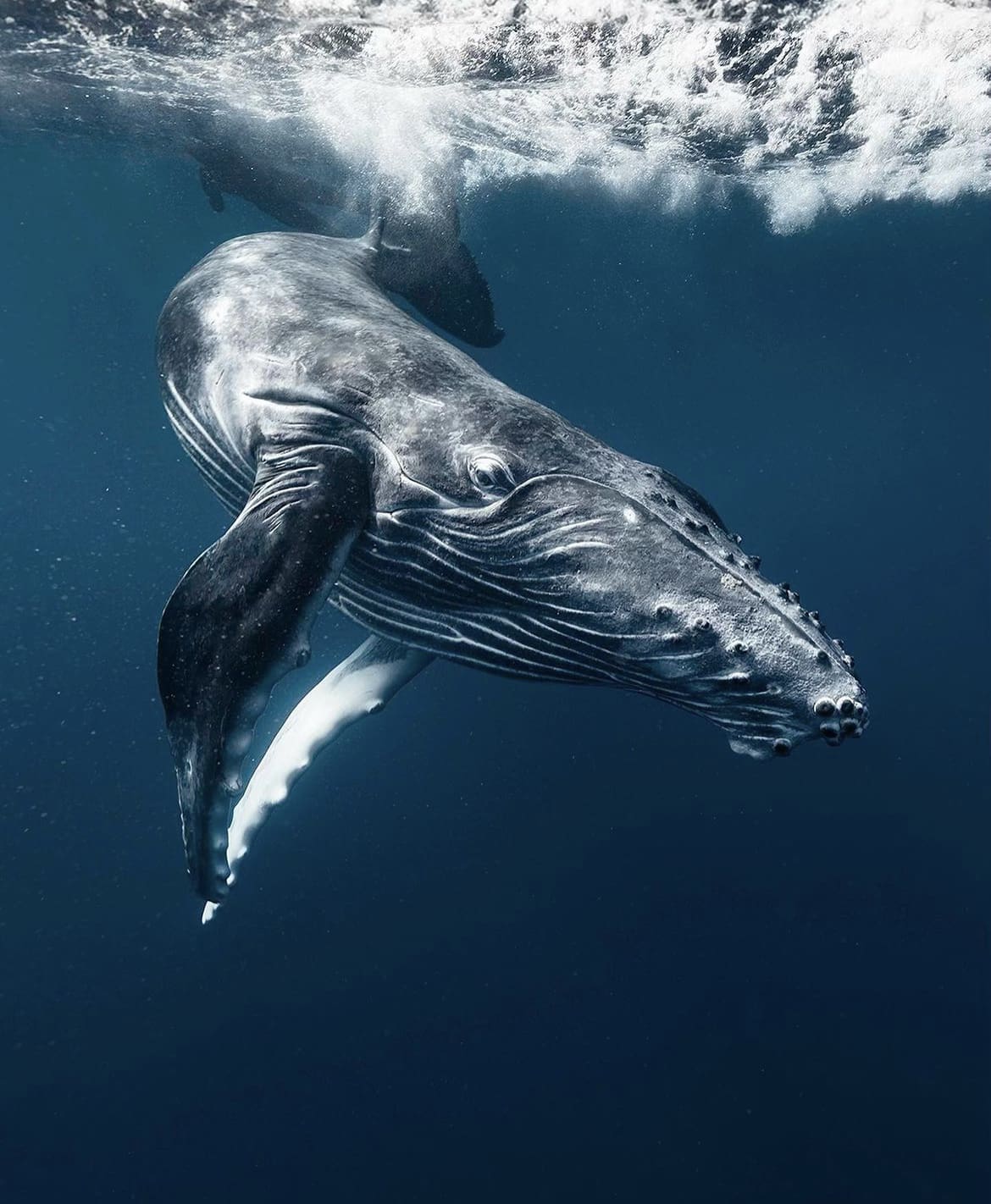
What do Humpback Whales Eat?
You might be imagining a creature as big as a humpback whale chowing down on something equally massive. But in reality, their diet is surprisingly small-scale. Humpbacks are mostly into krill and small fish, which they hunt using several clever techniques.
One of the most fascinating is bubble net feeding, a strategy where a group of whales swim in a circle blowing bubbles to create a net that traps their unsuspecting dinner. Then, with a signal that we’re still trying to decipher (a secret whale handshake, perhaps?), they all surge upwards with their mouths open, scooping up thousands of pounds of food in one go.
It’s a stunning display of teamwork and one of the many reasons why humpback whales are just so darn interesting.
With their unique feeding mechanisms, awe-inspiring tails, and a diet that shows size isn’t everything, humpback whales continue to fascinate and surprise us.
Humpback Whale Social Structure
Humpback whales are the social butterflies of the ocean. Well, not exactly butterflies given their size, but you get the picture. They’re known for forming pods, which are essentially groups that can vary in size from a handful to a couple dozen, especially when it’s time to chow down on a krill buffet.
However, these groupings are often temporary, as humpbacks are somewhat fickle with their friendships, forming and dissolving associations that can last anywhere from a few hours to several days.
But it’s not all fleeting connections; mothers and calves share a bond that’s as deep as the ocean they swim in. Calves stick with their moms for about a year, learning the ropes of whale life. During this time, the duo is inseparable, showcasing a tender side to these titanic creatures. Then there’s the matter of their migrations – epic journeys that can stretch over thousands of miles, from their feeding grounds in polar waters to the warmer climes where they breed and give birth.
It’s during these voyages that the true extent of their social network unfolds, with whales joining forces to navigate, feed, and protect each other.
Diving with Humpback Whales | @maalu_i
How do Humpback Whales Reproduce?
The love life of a humpback whale is something out of a marine soap opera. Every winter, they head to warmer waters to engage in elaborate courtship rituals that would put any dating show to shame. Males woo females with complex songs, a mix of moans, howls, and cries that can last up to 20 minutes and be repeated for hours. These songs are thought to serve multiple purposes: attracting mates, warding off rivals, or even as a form of sonar love letters.
Once a female is charmed, mating occurs, and thus begins the 11 to 12 months gestation period. Females give birth to a single calf in the warm, shallow waters, providing a safe nursery away from the open sea’s predators. These newborns are no small bundle of joy; they’re born weighing about a ton and stretching up to 15 feet in length. From the moment of birth, the calf is on the move, swimming alongside its mother, nursing on rich, fatty milk, and learning the intricate dance of whale life.
How Long do Humpback Whales Live?
The lifespan of a humpback whale is a testament to the endurance of these marine mammals. On average, they can live to be around 80 to 90 years old, with some reports suggesting a few may even breach the century mark. This longevity allows them to play a long game in the ocean’s ecological theatre, contributing to the health of marine environments through their feeding activities and even their existence as massive organisms.
Their long lives are filled with migrations, breeding, feeding, and the occasional breach into the air that leaves onlookers in awe. However, it’s not an endless summer for these giants; they face threats from human activities and environmental changes that can cut their lives short. But through conservation efforts and a growing awareness of their importance to the ocean’s health, there’s hope that future generations of humpback whales will continue to thrive and enchant us for years to come.
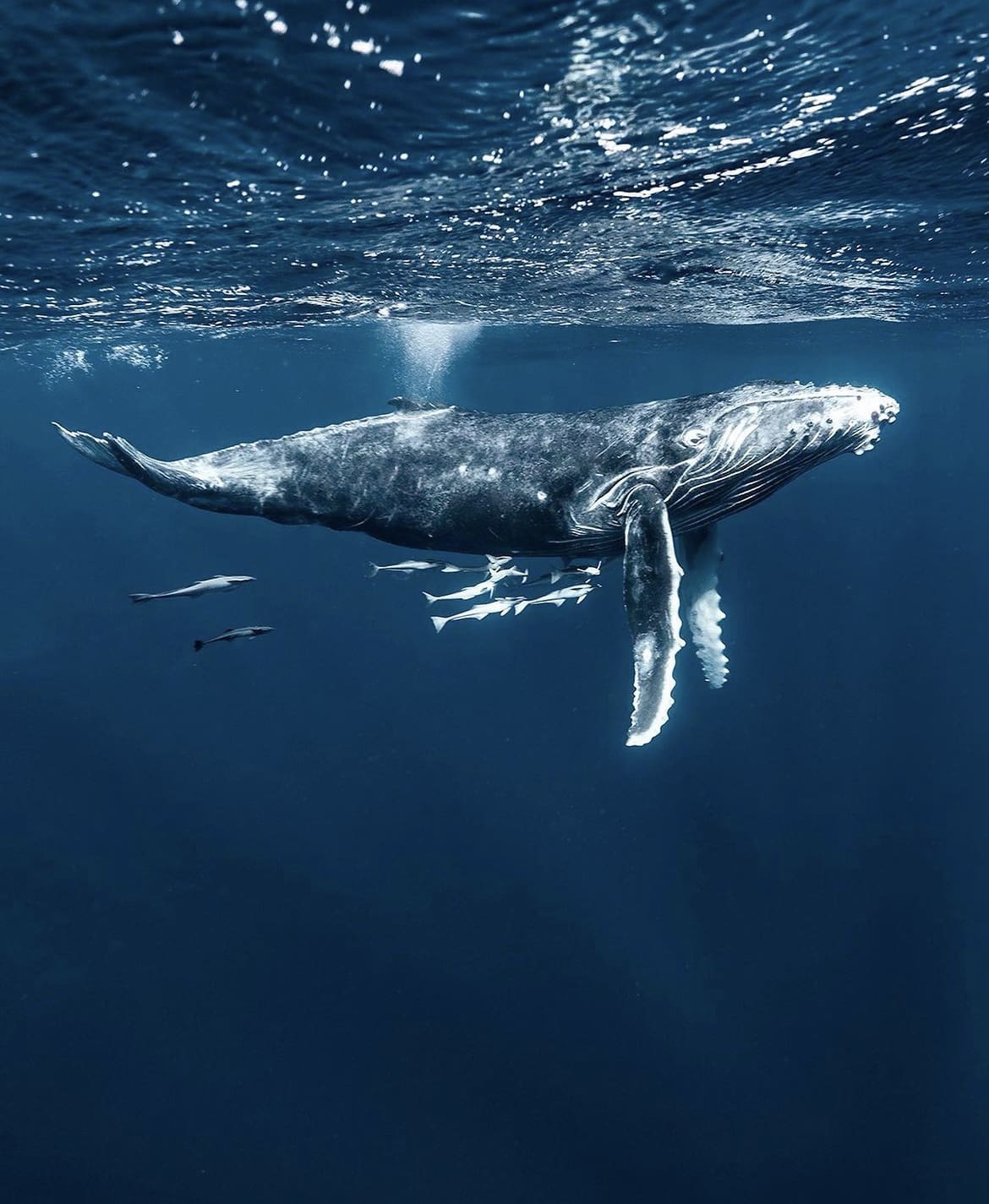
Are Humpback Whales Aggressive?
The word “aggressive” might conjure images of ferocious sea monsters in the minds of the uninitiated, but when it comes to humpback whales, it’s a bit of a misnomer. Sure, they’re massive and undoubtedly powerful, but humpbacks are generally gentle giants. During their breeding season, males can become competitive and may jostle each other for the attention of a female, showcasing impressive displays of power like breaching and tail slapping. However, these actions are more about showmanship than aggression towards humans or other species.
It’s worth noting that humpback whales have been observed protecting other animals from predators like orcas, displaying a level of empathy or social behavior that’s rare in the wild. So, while they’re capable of throwing their weight around, they’re usually peaceful, sticking to their krill diets and songs of the sea.
Are Humpback Whales Territorial?
Considering the vastness of the ocean, it’s fascinating to ponder whether creatures as large as humpback whales lay claim to any part of it. The short answer is no; humpback whales are not territorial in the way some land animals are. Their lives are bound by migration, following the ebb and flow of the seasons from feeding grounds to breeding areas.
These migrations see them traveling thousands of miles, from the cold, nutrient-rich waters where they feast to the warmer, tropical or subtropical waters where they mate and give birth. This lifestyle doesn’t lend itself to defending a specific patch of ocean. Instead, they share the seas, their routes overlapping with those of other whales and marine species, in a grand, global dance dictated by the rhythms of nature.
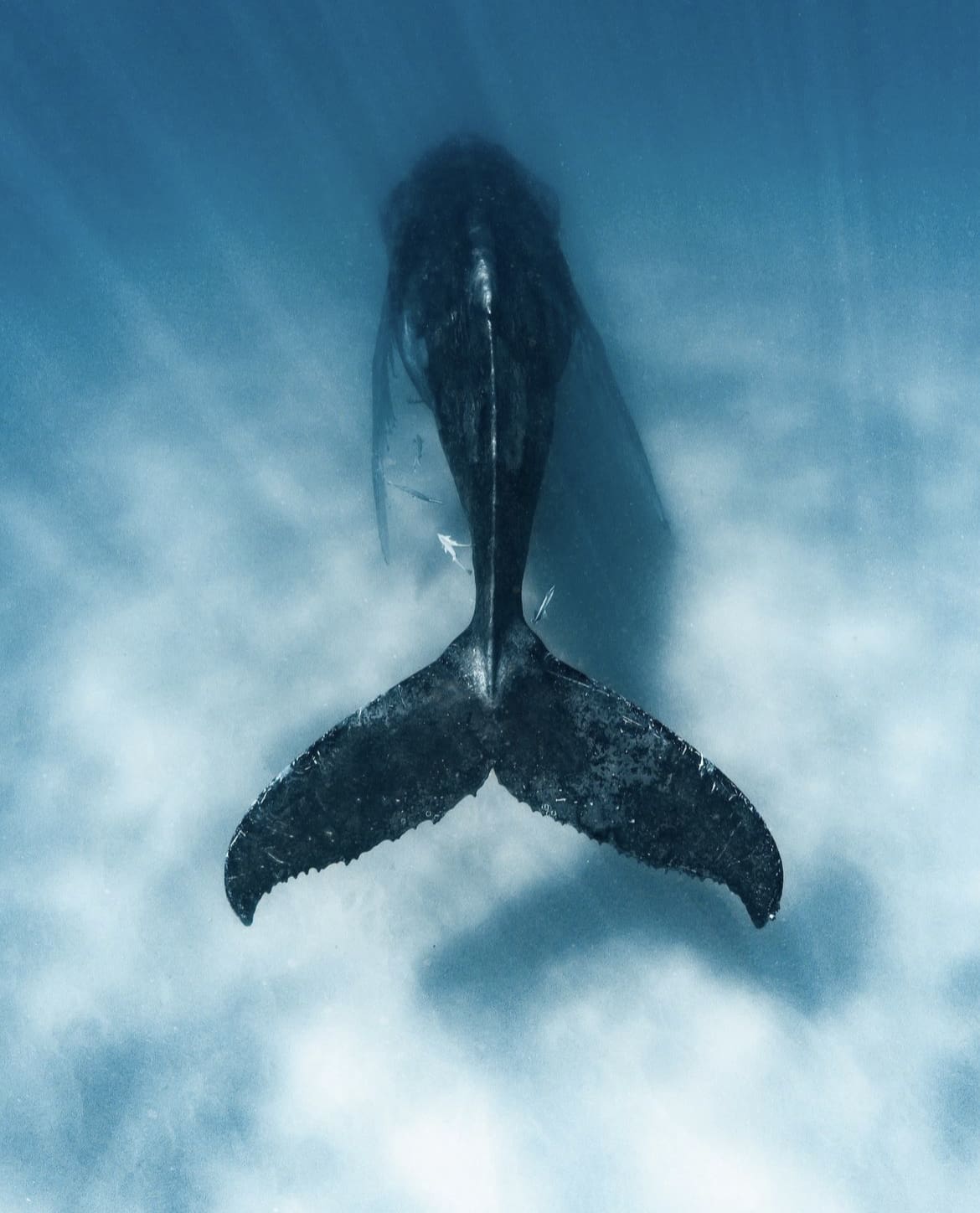
Humpback Whale Migration
Speaking of migration, let’s dive into one of the most awe-inspiring aspects of humpback whale behavior. These migrations are among the longest of any mammal on Earth, with some individuals traveling up to 5,000 miles (about 8,000 kilometers) each way. The journey from feeding to breeding grounds is not just a leisurely swim; it’s a strategic move to take advantage of the best conditions for feeding and raising their young.
The drive behind these epic voyages is twofold: the search for the abundant food sources available in colder waters and the need for warm, calm waters for birthing and nursing calves. Interestingly, during their migration and breeding season, adult humpback whales fast, living off the fat reserves they’ve built up during the feeding season. It’s a testament to their incredible adaptation and resilience, showcasing a life lived in harmony with the ocean’s vast and varied landscapes.
These migrations are not just random wanderings; they’re a deeply ingrained part of the humpback whale’s life cycle, guided by instinct and perhaps even the stars.
Where do Humpback Whales Live?
Humpback whales are the nomads of the ocean, with a passport filled with stamps from a variety of aquatic ‘countries’. They’re found in all the world’s oceans, from the icy waters of the Arctic and Antarctic to the warm, tropical seas near the equator. Their homes are dictated by their migratory patterns, which are in turn driven by the need to feed in rich, cold waters and breed in warmer climates.
These whales have a preference for coastal areas and shallow seas for breeding and calving, making destinations like the coasts of Hawaii, Australia, and Mexico popular spots for whale watchers. Conversely, their feeding grounds are typically found in colder, polar waters where their favorite meals—krill and small fish—are abundant. This adaptability to diverse environments is a testament to the humpback’s resilience and the evolutionary paths they’ve followed over millennia.
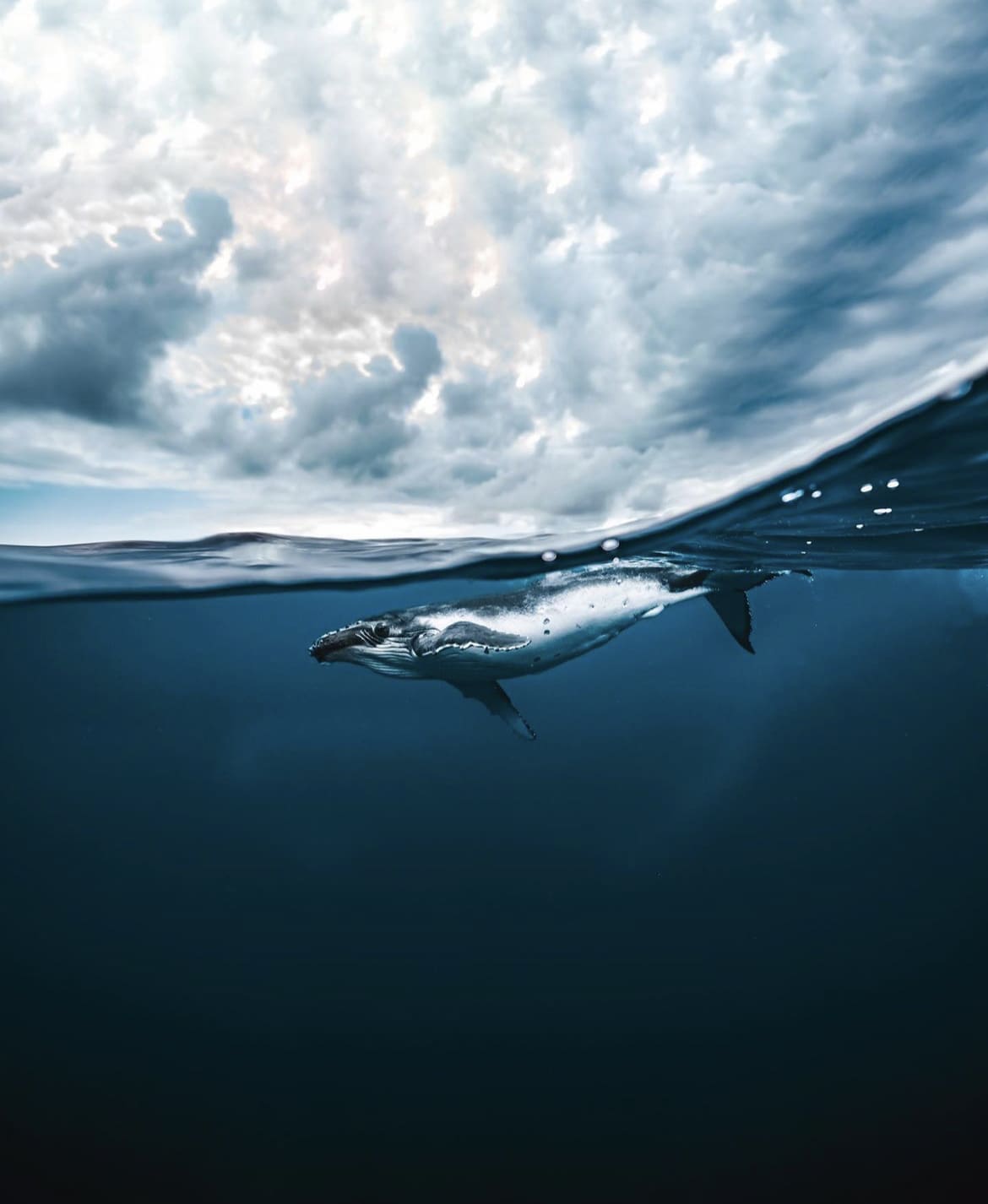
How Many Humpback Whales are There in the Ocean?
The story of humpback whale populations is one of tragedy and triumph. Hunted nearly to extinction by the mid-20th century, these whales have made a remarkable comeback thanks to international conservation efforts and a moratorium on commercial whaling instituted in 1986. Today, it’s estimated that there are around 60,000 to 80,000 humpback whales worldwide, a number that continues to grow, albeit slowly, as they recover from the brink of extinction.
This resurgence is a beacon of hope in the conservation world, showcasing the resilience of nature when given a chance to recover. However, the numbers are still a fraction of what they were before whaling, and the species’ recovery remains an ongoing effort, with some populations faring better than others.
Are Humpback Whales Endangered?
The conservation status of humpback whales is a patchwork quilt, varying by region and population. Globally, they’re classified as “Least Concern” by the International Union for Conservation of Nature (IUCN), reflecting their overall population recovery. However, this status masks the nuanced picture of certain populations that are still vulnerable and facing threats from entanglement in fishing gear, ship strikes, and climate change.
Efforts to protect humpback whales continue in earnest, with marine sanctuaries established in critical habitats and ongoing research to understand their needs and behaviors. The story of the humpback whale is a powerful reminder of the impact humans can have—both destructive and restorative—on the natural world.
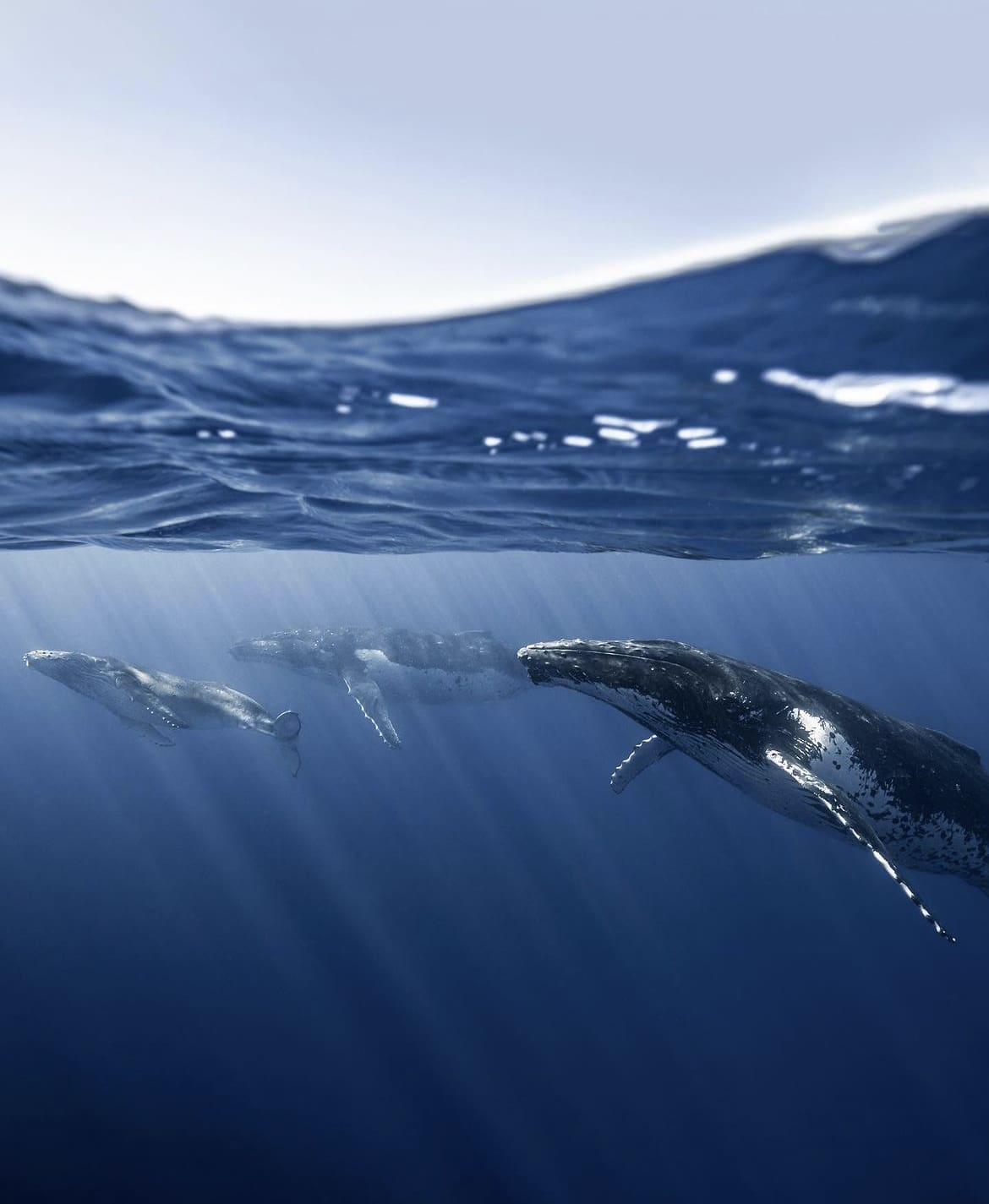
Threats to Humpback Whales in the Wild
Despite their vast size and strength, humpback whales navigate a sea of challenges, many of which are exacerbated by human activities. Entanglement in fishing gear, known as bycatch, poses a significant risk, leading to injury or death for many whales each year. Ship strikes are another critical threat, as busy shipping lanes often overlap with whale migration routes. Furthermore, the specter of climate change looms large, altering ocean temperatures and currents, which in turn affects the distribution of krill and small fish that humpbacks rely on for food.
Noise pollution from ships, sonar, and other marine activities disrupts humpback whale communication, breeding, and navigation. Lastly, habitat degradation, including pollution and the destruction of coastal areas, adds to the list of threats these animals face daily. While the situation may seem dire, awareness and conservation efforts are making strides in mitigating these risks, showcasing humanity’s capacity to change the tide for the better.
Where to Dive with Humpback Whales
For those yearning to witness the grace of humpback whales in their natural habitat, there are several destinations around the globe renowned for offering once-in-a-lifetime encounters. Places like the Silver Bank in the Dominican Republic, the warm waters off the coast of Maui, Hawaii, and the pristine seas surrounding Tonga, are famed for their humpback whale populations, particularly during the breeding and calving season.
When planning a dive or snorkel with these gentle giants, it’s crucial to choose operators that adhere to responsible wildlife tourism practices, ensuring minimal impact on the whales and their environment. This not only guarantees a more authentic experience but also contributes to the conservation efforts that protect these magnificent creatures.
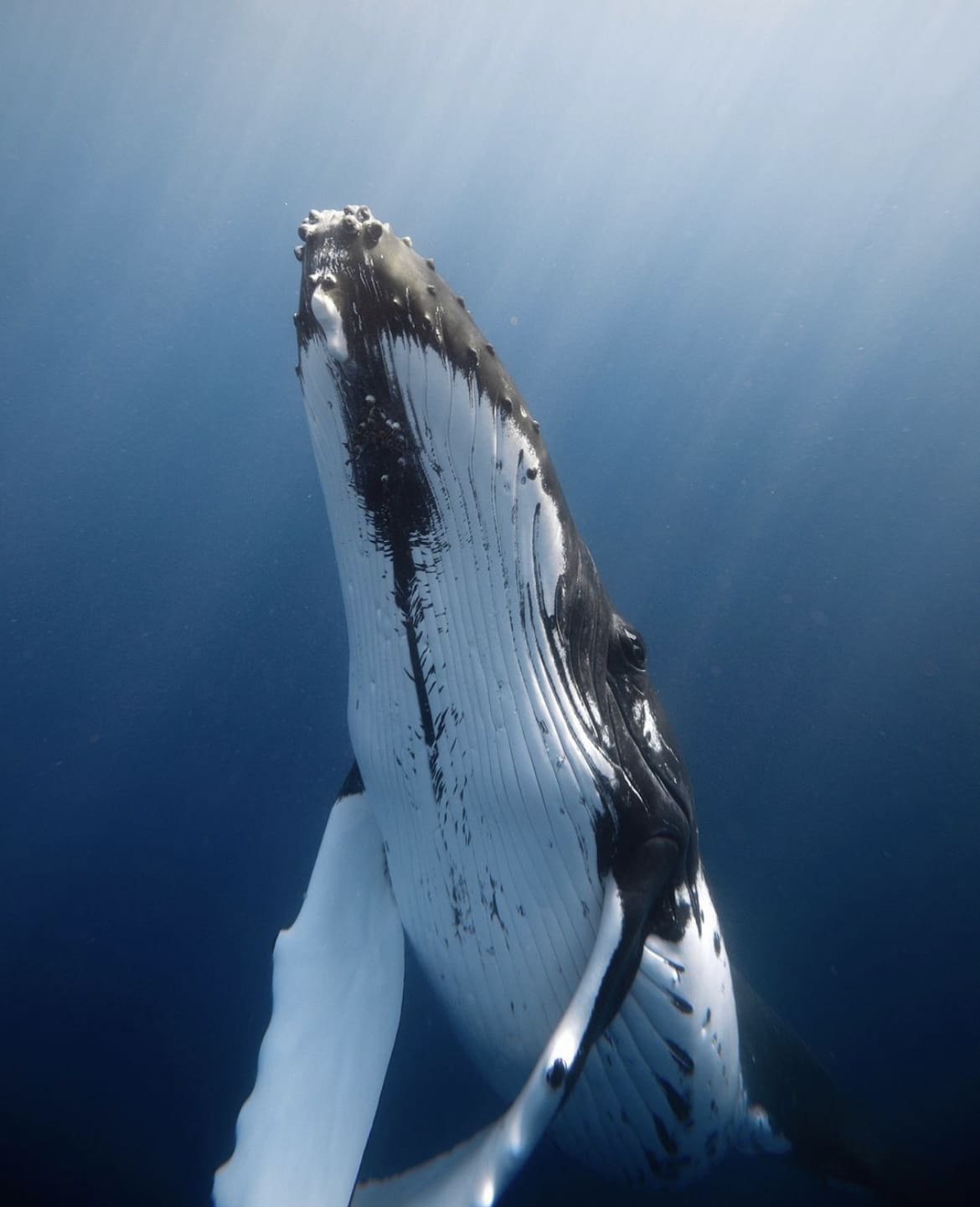
Tips for Spotting Humpback Whales
For those looking to spot humpback whales from the comfort of a boat or the shore, timing and location are key. Understanding the migratory patterns of humpback whales can greatly increase your chances of sightings. Generally, visiting their breeding grounds during the winter months and feeding areas in the summer will yield the best opportunities. Keeping a respectful distance and using binoculars can enhance your experience, allowing you to observe these majestic creatures without disturbing their natural behaviors.
Facts about Humpback Whales
- Humpback whales can eat up to 1.5 tons of krill and small fish per day during feeding season.
- They are known for their complex songs, which can last for up to 20 minutes and be heard over great distances underwater.
- A humpback whale’s flippers can grow up to a third of their body length, the largest appendage of any living creature relative to body size.
- Humpback whales are capable of traveling at speeds of up to 16 miles per hour (25 kilometers per hour) when migrating.
Myths about Humpback
- Myth: Humpback whales use their humps to store water. Fact: The “hump” is actually a dorsal fin used for navigation and stability.
- Myth: Humpback whales sing only for mating purposes. Fact: While mating is a significant reason, males also sing to communicate and establish dominance.
- Myth: Humpback whales are solitary animals. Fact: They often travel in pods and show complex social behaviors, especially between mothers and calves.
It’s clear that these creatures are not just another species in the ocean—they are a testament to nature’s wonder, resilience, and the interconnectedness of all life on Earth. By understanding their lives, challenges, and the sheer awe they inspire, we’re reminded of our responsibility to protect these magnificent animals and the environment they call home.
The story of humpback whales is far from over, and each of us has a part to play in ensuring it continues for generations to come.
